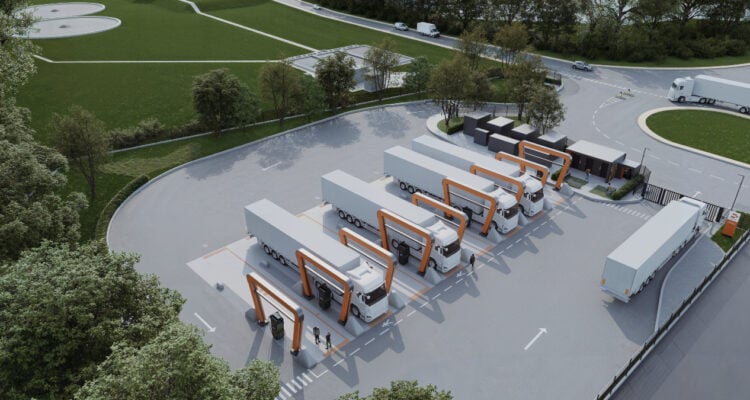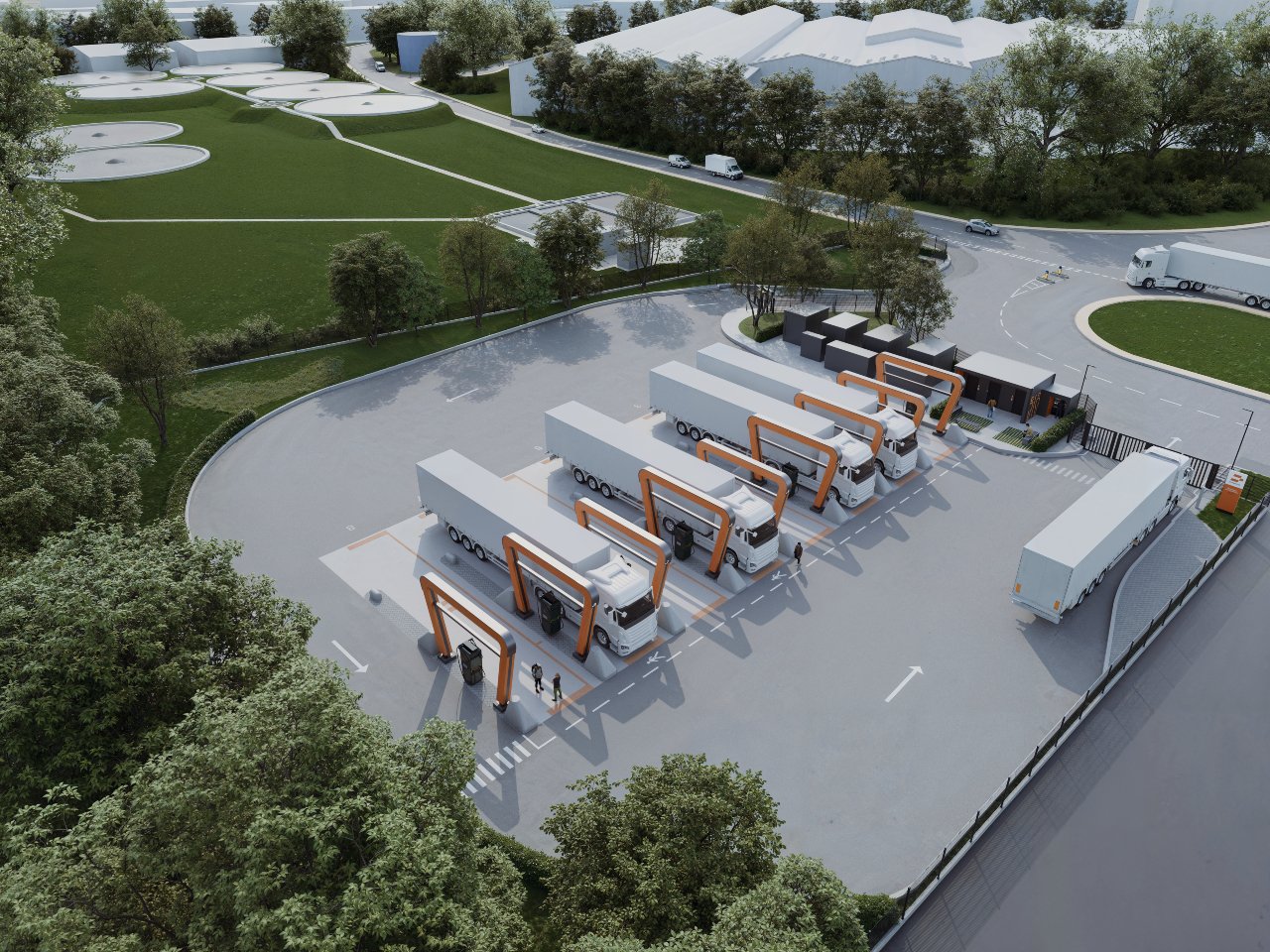As the United Kingdom accelerates its transition to zero-emission transportation, the development of a robust public charging network for commercial vehicles is paramount. This article delves into the current landscape, challenges, and future prospects of the UK’s public commercial vehicle charging infrastructure.
The UK’s commitment to phasing out new petrol and diesel vehicles by 2035 necessitates a substantial expansion of electric vehicle (EV) infrastructure. While significant progress has been made in passenger vehicle charging, the commercial sector, encompassing heavy goods vehicles (HGVs), buses, and delivery fleets, requires tailored solutions to meet its unique demands.
Current Initiatives and Developments
Several industry leaders and energy companies are spearheading initiatives to establish dedicated charging hubs across the nation. Notably, Milence—a joint venture between Daimler Truck, the Traton Group, and Volvo—has unveiled plans for a charging hub at Panattoni Park in Aylesford, Kent. This facility is designed to accommodate electric HGVs (eHGVs) with high-capacity chargers, aiming to reduce charging times significantly.
Anja van Niersen, Chief Executive Officer of Milence, said: “Kent, with its location between mainland Europe and London and the South East, is the perfect location for a second Milence charging hub in the UK.
“Combined with our charging technology, it means we’ll be able to meet the growing demand from eHGV operators and support the transition to sustainable road transport.”
In addition to Milence’s efforts, other companies are contributing to the expansion of the UK’s charging network. For instance, ubitricity has become the UK’s largest public EV charging network, offering innovative solutions such as lamppost-integrated chargers, which provide accessible charging options for urban areas.
Aegis Energy revealed its plans to build five commercial vehicle refuelling and recharging stations by the end of 2027 with a £100 million investment from Quinbrook Infrastructure Partners.
Christopher Thorneycroft-Smith, co-founder at Aegis Energy, said: “Building depot infrastructure can be complex and grid connections are not easy, or cheap, to secure.
“Not only this, but long-haul operations require a top-up charge, and for van drivers, when at-home charging isn’t a practical solution, they lose time waiting to charge elsewhere.
“The transition will take time and play out differently for each fleet, but by providing public hubs with multiple clean energy charging and refuelling options, we’re supporting operators to choose how they want to make the transition.”
Despite these advancements, several challenges impede the rapid deployment of commercial vehicle charging infrastructure:
- High Installation Costs: Establishing high-capacity charging stations entails substantial financial investment, particularly in urban areas where space is limited and construction costs are elevated.
- Grid Capacity Constraints: The existing electrical grid must be upgraded to handle the increased load from multiple high-power chargers operating simultaneously.
- Standardisation Issues: The absence of universal charging standards can lead to compatibility problems between different vehicle models and charging stations.
- Planning and Regulatory Hurdles: Navigating the complex landscape of planning permissions and regulatory compliance can delay project timelines.
To overcome these obstacles and foster a comprehensive charging network, the following strategies are recommended:
- Public-Private Partnerships: Collaborations between government entities and private enterprises can pool resources and expertise, expediting infrastructure development. For example, the Association of British Insurers (ABI) has proposed a model to invest billions from their safety buffers into green infrastructure projects, including EV charging stations.
- Grid Modernisation: Investing in smart grid technologies and energy storage solutions can enhance grid resilience and accommodate the increased demand from commercial EVs.
- Standardisation Efforts: Developing and adopting universal charging standards will ensure interoperability across different vehicle types and charging stations, simplifying the user experience and reducing infrastructure complexity.
- Incentivising Investment: Government incentives, such as tax breaks and grants, can encourage private sector investment in charging infrastructure. Additionally, streamlining the planning and approval processes can reduce barriers to entry for new projects.
The trajectory of the UK’s public commercial vehicle charging infrastructure is promising. With concerted efforts from industry stakeholders, government support, and technological advancements, the vision of a comprehensive, efficient, and accessible charging network is within reach. This development is crucial for achieving the nation’s environmental goals and ensuring the seamless operation of commercial fleets in a sustainable future.
In conclusion, the advancement of the UK’s public commercial vehicle charging infrastructure is a multifaceted endeavour requiring collaboration, innovation, and strategic planning. By addressing the existing challenges and implementing the recommended strategies, the UK is well-positioned to establish a world-class charging network that supports its transition to a sustainable transportation future.
Mark Salisbury, Editor




















